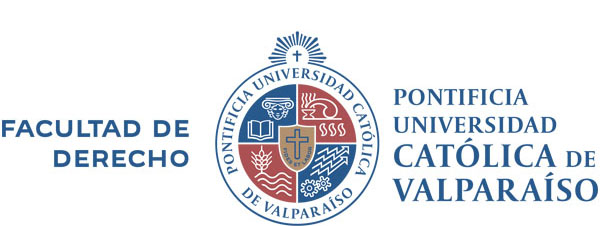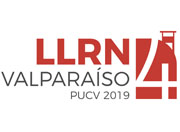Places of interest
The hills of the port city contain mystery and nostalgia for past times. With walks to do on foot, the Atkinson Promenade, adorned with 19th century houses and their respective gardens stands out; the Gervasoni walk, similar to the previous one; the Yugoslav walk, characterized by its walls with artistic graffiti; and the May 21 stroll, which features local craft stalls.
Museums
Valparaiso is a city full of culture. Sample of this are its museums. The artist Lukas made Valparaíso one of his main sources of inspiration, and his house can be visited in Cerro Concepción. Other options are the Sebastiana, one of the residences of the poet and national Nobel Prize Pablo Neruda, in Cerro Florida; the former Naval School, now museum in Cerro Artillería; the Baburizza Museum, art noveau style and located in Cerro Alegre; and the Open Sky Museum, a walk with murals by artists such as Nemesio Antúnez and Mario Toral, as well as modern art such as graffiti in Cerro Bellavista.
Typical Gastronomy
We recommend in Valparaíso the classic "picada" J. Cruz, a place full of history, curiosities and in which competitors can leave their mark on the tables; the Cardonal Market, whose second floor offers various cuisines with the best traditional dishes; and Caleta Portales, a space where the specialty is fish and seafood by the sea.
Bohemia
Valparaiso stands out for its nightlife. Among its bars stand out the Cinzano, local that dates from 1896 in which the sailors met in their leisure hours to bet on games of chance and to drink; the English Bar, meeting point in the last century of British immigrants, with a collection of 500 glasses with the names of its visitors; and Liberty, the oldest bar in Valparaíso, targets poets, musicians and other artists. Of course, there are many other bars with less history, but also open their doors to visitors to live the bohemian experience of night Valparaiso.
Viña del Mar, is located on the central coast of Region V of Chile, 120 km. of the capital, Santiago. Given its geography and residential character, it has historically maintained the status of a spa town, thanks to the adequate use of its landscape potential and the execution of various projects that have consolidated Viña del Mar, through time, as the "Tourist Capital of Chile ", a name that transcends our borders.
Viña del Mar is also known as the "Garden City" for being originally surrounded by large green areas and presently preserving in its urban area beautiful and extensive gardens with varied native and exotic floral and tree species. It is remarkable the fact that in the viñamarina community there is a true culture to preserve and to generate this type of areas.
The beauty offered by its urban aesthetics harmoniously combines with its 13 beaches, a diversified offer of culture, gastronomy and entertainment, thanks to its important and outstanding venues, such as the Casino Municipal de Juegos.
The short distance that separates it from Santiago (90 minutes app. In vehicle), facilitates the attendance of tourists and be one of the favorite destinations of national and foreign tourism.
One of its main attractions is its extensive coastal border, in which 8 kilometers of beaches, walks and rockeries alternate.
Also noteworthy are its numerous palaces, old mansions of wealthy families that today have been transformed into elegant museums.
This city is also characterized by an intense cultural and artistic life. His seasons of concerts and musical contests have a long tradition and a recognized prestige. Among its activities is the International Festival of Song of Viña del Mar, which is held every year in February.
Viña del Mar has a temperate Mediterranean climate with winter rains and a prolonged dry season. The temperatures during the summer (December - February) fluctuate between 25ºC the maximum and 13ºC the minimum.
Today, Viña, with 286,931 inhabitants, according to the last Population Census (2002), is the protagonist of an important process of urban development and modernization that did not appear in about 80 years.
Among the works that characterize this new cycle are the IV Stage, regional mega-project and in Viña meant the collapse of the railroad and the opening of important 5-star hotels such as the Hotel del Mar and Sheraton Miramar.
Casablanca, the wine route
The first valley of cold climate of Chile and known nationally and internationally for its multiple vineyards, some open to the public and others depending on their respective agendas. Among these are Casas del Bosque, Estancia el Cuadro, Emiliana, House and Matetic, to name but a few. There are several guided tours subject to schedules - morning, afternoon and full day - and prices, many of which also include lunch in typical country food restaurants. More information, time booking and locations in Ruta del Vino.
Maitencillo
Apart from Viña del Mar and Valparaíso, Maitencillo is one of the best known resorts in the Fifth Region. It has the beaches Aguas Blancas, Los Pocitos, Las Conchitas, El Abanico and Playa Grande, whose waves are preferred by surfers. There are also many paragliding practitioners in the area. It is located north of Concón and south of Papudo, along the north coast route.
Papudo
Further north is the commune of Papudo. In addition to its beaches, it is possible to do other ecotourism activities, such as trekking, horseback riding, hiking and underwater expeditions. It is also said that in this town would be buried part of the treasure of the pirate Francis Drake, who ravaged the Chilean seas in the sixteenth century, under orders of the British Crown.
La Ligua
A locality more located in the interior, whose main artactivo are its famous sweets, a vast variety of typical cakes of the zone between what they are the dusty ones - two rolls united with manjar to the center and respolvoreados with sugar florida - and the bunches - stuffed puff pastry, to mention a few. Also, this city is known for its variety of wool fabrics - sweaters, socks, hats, etc. - for sale throughout the year. More information on their website.
Santiago, capital city
Founded on February 12, 1541 and then called Santiago de Nueva Extremadura, it is another city with interesting visits to know the history of our country. The historical nucleus is the Plaza de Armas de Santiago, where Pedro de Valdivia initiated the plan of the city; the streets that delimit it at present are Cathedral and Monjitas by the north, 21 of May and State by the east, Company and Merced to the south, and Stroll Ahumada to the west. Adjacent to the Plaza de Armas is the Metropolitan Cathedral, home of the Archdiocese of Santiago, considered as a national monument. The Palacio de la Moneda is the Government House, and admits guided tours; the Museo de Arte Precolombino (Bandera 361, Santiago Centro, Santiago) exhibits various handicrafts from the villages that inhabited the territory before the arrival of the Spaniards; San Cristóbal Hill (Pío Nono 450, Recoleta, Santiago) offers views of all corners of the city, botanical and zoological parks,

